

The Axe: an object lesson in design
source link: https://uxdesign.cc/the-axe-an-object-lesson-in-design-cf1eef4702b9
Go to the source link to view the article. You can view the picture content, updated content and better typesetting reading experience. If the link is broken, please click the button below to view the snapshot at that time.
The Axe: an object lesson in design
Getting a grip on real-world tools can provide valuable design lessons.
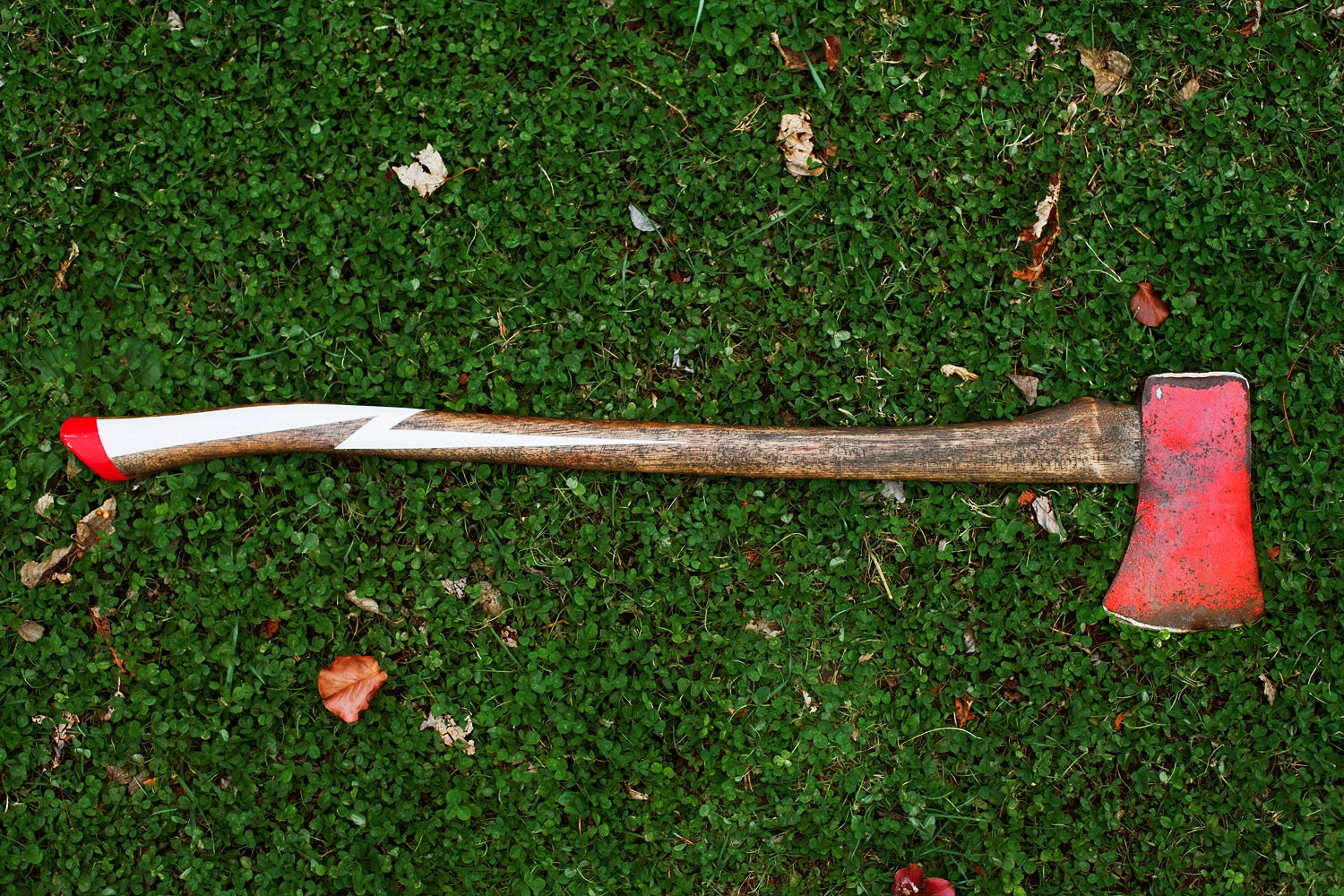
As the autumn begins to hint at its colors where I stand in the Northern Hemisphere, I check the woodpile and sharpen my axe. It’s been sitting idle since last March. It’s my 5 lb. Dayton pattern, hung on a 37" Hickory haft.
Sure, a splitting maul would be more prudent. But a 5 pounds, with a honed Scandi grind, it more than does the job, even on knotty Gamble’s Oak. This gratuitous choice of equipment is about as far as my indulgence goes in my home heating program. The only thing more decadent will be when I stay inside and just turn up the thermostat during the late winter snowstorms next spring. But this is not an essay on weather predictions, home energy consumption, or even axes. This is an essay about User Experience and Interaction design, written by a designer. If you are interested in axes, consider any knowledge gleaned an added feature.
I have axes like some people have golf clubs. Which is to say, I have many. More than necessary. Each designed for its own unique purpose, often only evident to me. An axe is, objectively, a few or more pounds of steel, and a few feet of wood. In material terms, it is very little. Which is fundamental in it’s appeal to me. In recent years the axe has found itself to be a cultural symbol, metaphor, and sign of the times. Most compelling to me, however, is that an axe exists in a dichotomy of associations. First, I am a recovering romantic, prone to occasional bouts of nostalgia. Second, I am also a designer, inherently interested in efficacy, progress, improvement, and technological advancement.
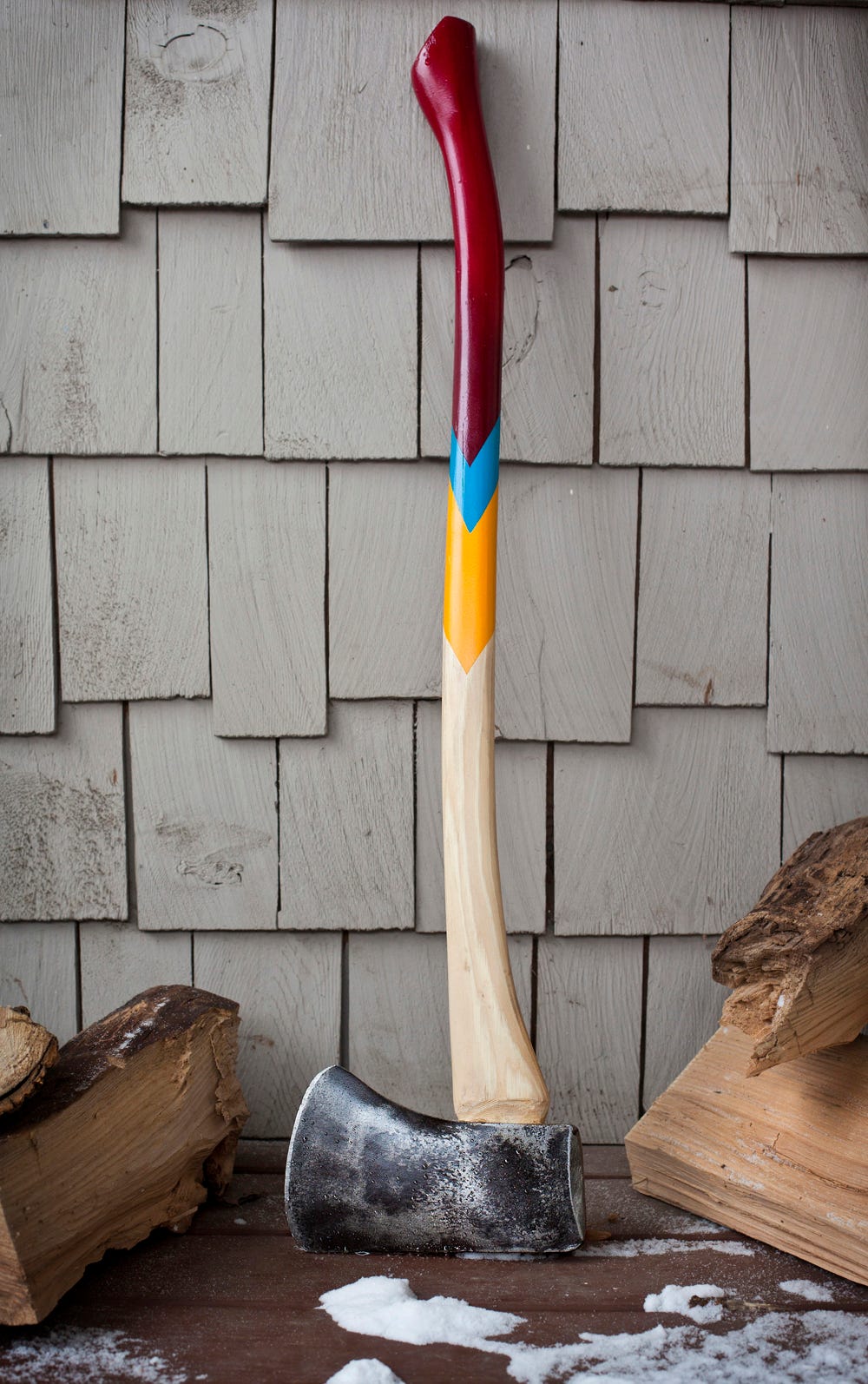
This essay focuses on the latter: the axe as a study in design. There is plenty of prose and poetry dedicated to the former, and much of it does a better job than this average author could at expressing the historical symbolism of the Axe and it’s place in the western man — and women’s — cultural psyche. I will resist the urge to indulge in my personal relationship with this tool, and say only that, as a child, our home was heated by a wood burning stove. The work of preparing for winter required time in the woods behind our farm, and hours splitting and stacking in the woodlot. The implements and activities required to produce a tightly stacked cord of hardwood are ingrained in me; both muscle memory and personal memory. As mentioned, in the winter, a wood fire burns in my own home still.
For those with experience in this area, I’ll narrow the definition of axes here to the American felling axe, a quintessential form whose function is often imagined: it is an implement designed for the human body to operate by swinging, and striking a standing tree, in order to bring it to the ground in a controlled manner (as possible). As I mentioned, there are many types of axes. It is the felling axe that is included here in the accompanying images.
The axe as design specimen
An axe does not work because it is beautiful. It is beautiful because it works.
In product design today, practitioners have developed a shared language and philosophies to communicate and achieve consensus on the characteristics, considerations, and merits of our craft.
For this essay, I’ll outline here the axe’s merit when considered against Don Norman’s six principles of interaction design. As product design has extended from physical to digital, much of our shared language has evolved accordingly. Professor Norman’s teachings have been applied to both.
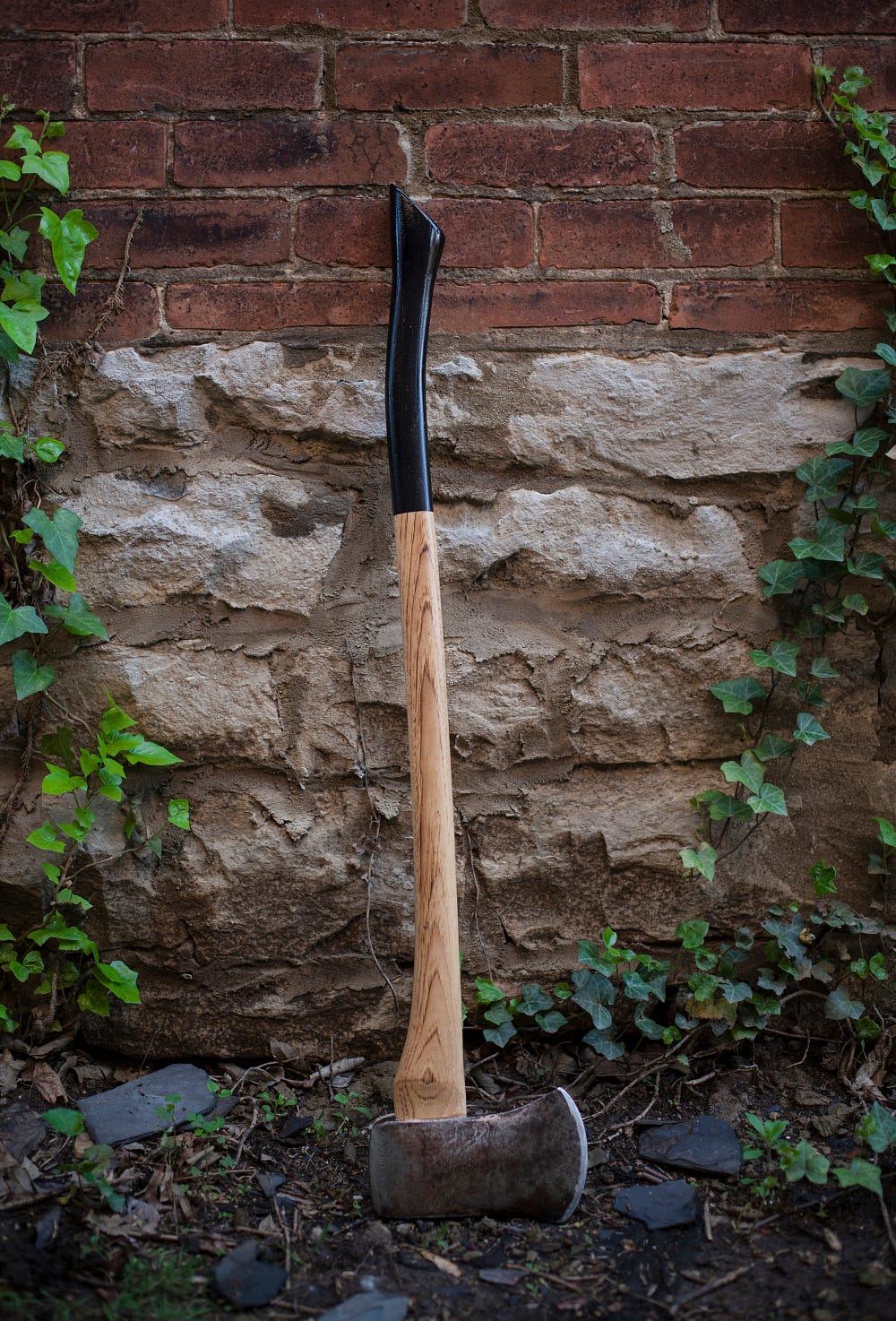
Visibility —
The more visible functions are, the more likely users will be able to know what to do next.
When my daughter was 3 years old. I observed her walk up to my axe. It was lying flat on the ground. She picked it up, by the correct end, with the bit facing down, and “swung it” to the earth. (Parents: I was observing from very nearby.)
The material, shape, and ergonomics of an axe inherently tells the user how to handle it. The weight and balance instructs the user how to operate it. Even a 3-year-old knows not to grab it by the hard, cold, sharp, metal head, but rather the smooth, soft, warm(er), wooden end. The curve of a well-shaped haft, complete with a fawnsfoot knob communicates it’s orientation and action. The weight shows the handler the motion intended.
Feedback —
Feedback is about sending back information about what action has been done and what has been accomplished, allowing the person to continue with the activity.
Task completion with an axe is as visceral of an activity as it is objective. If felling a tree, most will know when it is no longer standing upright: sight, sound, and if the tree is big enough, the shake of the earth underfoot will provide sufficient feedback. If the axe is employed to split logs, one will also know when one piece of large wood becomes two smaller ones.
Conversely, error detection is clear and immediate. A mis-swing of an axe can be dangerous, but more often, it is an uncomfortable and unsatisfying experience. Missing the mark with axe often means in indirect strike, sending the axe off of the trajectory it was designed to travel. The tree will still be standing. The log still in one piece. This results in discomfort to the users hands, wrists and ego.
Constraints —
The design concept of constraining refers to determining ways of restricting the kind of user interaction that can take place at a given moment.
The axe doesn’t do much. But what it does, it does well when maintained. Once put into motion, it is a tool built to increase inertia to concentrate impact on a narrow and defined point and plane. Past the apex of a swing, be it overhead or side-armed, an axe cannot be stopped.
The axe is the antithesis of a swiss army knife. An axe is purpose-built for a very narrow set of tasks. This constraint allows for high efficacy. In product design terms, it has a very short list of user stories, and equally short UAT criteria. In contrast, a swiss army knife attempts to be a little bit of everything for everybody — a study in unwinnable compromise. Try splitting firewood with a swiss army knife, and you are in for a cold night. Moreover, try using any tool offered by a swiss army knife to complete any task, and you will experience the sad consequence of not enough design constraints.
Mapping —
This refers to the relationship between controls and their effects in the world.
An axe, as most striking tools, is a primitive but effective example of control and effect: one end a user holds and swings (control) the other end strikes (effect). It is not hard for a user to understand which is which. (See Visibility.) The swing and the strike happen as close together as the user can muster.
Digital product design rarely offers such apparent mapping. But there is always a control and an effect. The closer and more evident in time and space that each can be experienced by a user will improve their understanding and command of the product being used.
Consistency —
This refers to designing interfaces to have similar operations and use similar elements for achieving similar tasks.
This is aspect of design is important. Depending on your disposition, you might think that ‘Creativity’ is the same as ‘Design’, and that both are demonstrated by original, “out of the box”, even contrarian thinking. It is not for me to try to prove those notions right or wrong – and this isn’t the essay to try. What I can say is that designers need to acknowledge and understand conventions within the cultural context their users operate in. ‘New’ and ‘different’ does not often equate to ‘intuitive’ and ‘easy’. Axes are easy to understand because they look and work a lot like hammers, which look and work a lot like a hoe, which is very similar to a shovel.
Affordance —
Affordance is a term used to refer to an attribute of an object that allows people to know how to use it.
The shape, balance, weight, and materials of an axe are precisely what, where, and how they need to be to do the job it was designed for. Pick up a well hung axe and it will show you how it works, almost swinging itself. Visually, an axe affords the user a handle. Once gripped, the weight of the head on the far end (See Mapping) will pull the striking end downward thanks to gravity. Form follows function.
The axe as technology
The axe is my primary inspiration for design. Often, when scrutinizing my own work, I ask myself “What else can I take away? How can this be made more obvious, effective, intuitive? – How can this be more like an axe?”
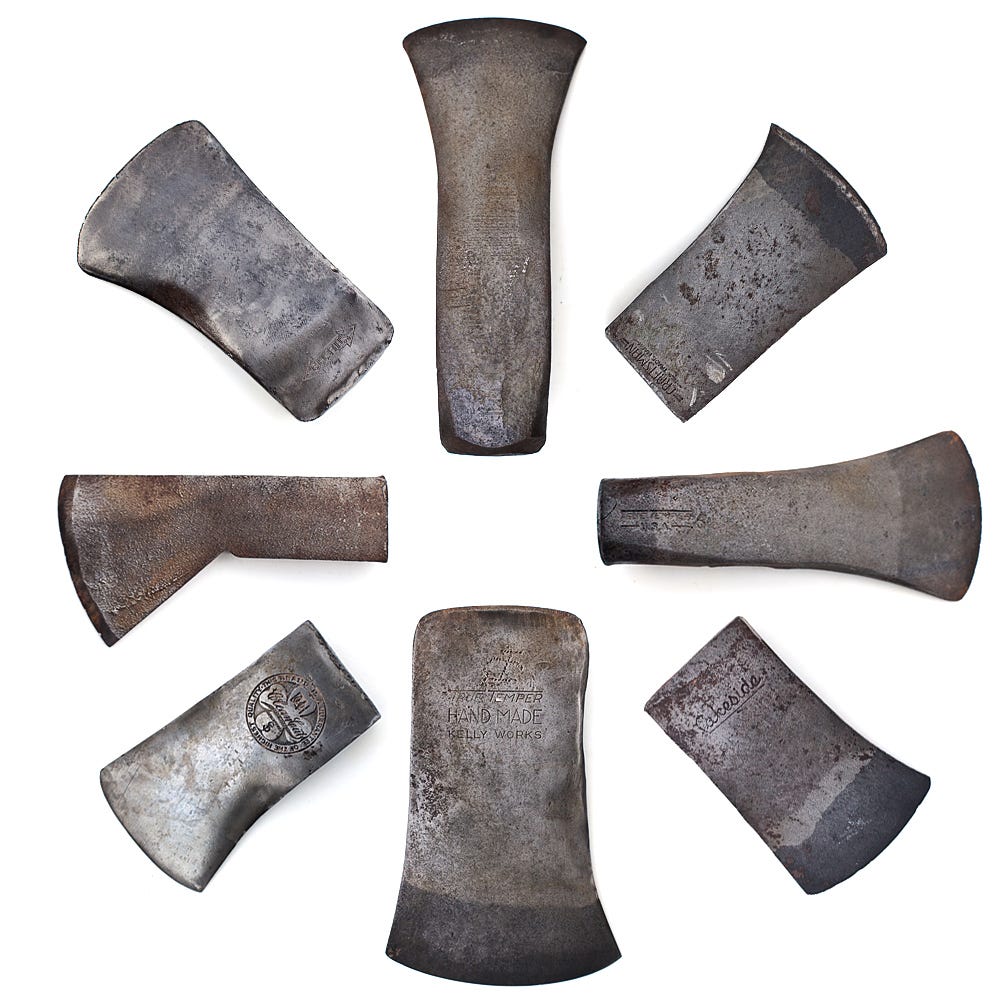
An axe (as is the case with most hand tools) is more than an empirical lesson in pragmatic design — which is the only type of design there is. An axe is also a demonstration of the marriage of design and its twin sibling, technology. Since the Stone Age, (or earlier) humans have been designing tools. By the Bronze age, technology allowed for the design of more effective implements. By the Iron Age, things were in full swing. Then as is true today, technology and design are mutual catalysts for innovation.
And a thorough conversation about design of tools — be them physical or digital —cannot be had without also discussing technology. Advances in material, manufacturing techniques, and our understanding of the physical world, and of ourselves, furthers the development of tools. Advances in the problems we attempt to solve will always seem to outpace our abilities to solve them.
One could make the argument (and I do) that the axe is the apex tool. It was the tool that built modern America (and a good bit of northern Europe and elsewhere), or at least tamed its wilderness, converting its New World boreal forests to ships masts, railroads ties, bridge trusses, homes, and fuel to feed and warm my fore bearers. Lest I succumb to a full-blown fit of romanticism, I’ll remind this writer, and his readers, that all technology was at one time the opposite of nostalgia — it was new. It was at one time innovative. Often, to use current parlance: all useful and effective things were once a disruptor. If I thought this point needed proven further, I’d also write a design essay on the chainsaw.
The axe as human-centered design
I can think of no better example of human-centered design than hand tools. They are the physical definition of utilitarian pursuit; designed (or repurposed) by humans, for humans, with a singular intention to accomplish a task in the best way possible to manipulate, create, repair or improve the world around us to better suit our needs.
Like any technology, an axe affords humans the power to wield constructive forces as a tool, and destructive forces as a weapon. Design and technology exist in the environmental, social, and cultural contexts of its user. An axe affords people the ability to create, as well has destroy, to help and harm.
Design ethics can be improved by better understanding the nature of the technology used, but more importantly: the nature of the people who will use it. The axe is a very real object. As I hope I’ve established here, it is also an analogy. The conceptual transition from an ancient Axe to tomorrow’s tools like Artificial Intelligence should not be impossible. Both yield tremendous power, each made possible by tremendous design.
Designers have an increasingly evident responsibility to understand their role in creating the future. Understanding objects of the past is a good place to start.
Swinging a 5 pound axe on a late summer morning can help too.
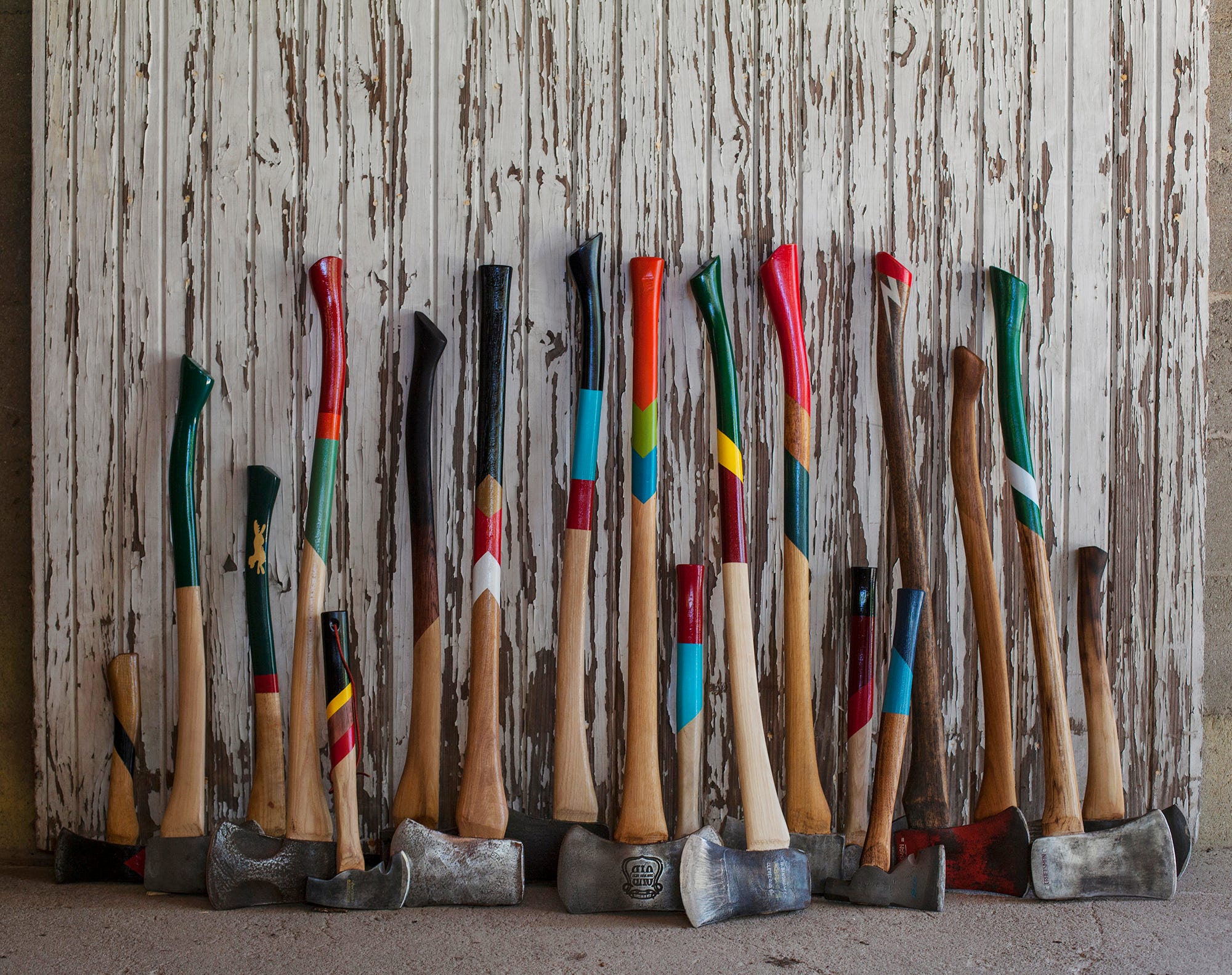
For less words and more images of axes I’ve studied and restored, visit nightfox.es.
Recommend
About Joyk
Aggregate valuable and interesting links.
Joyk means Joy of geeK